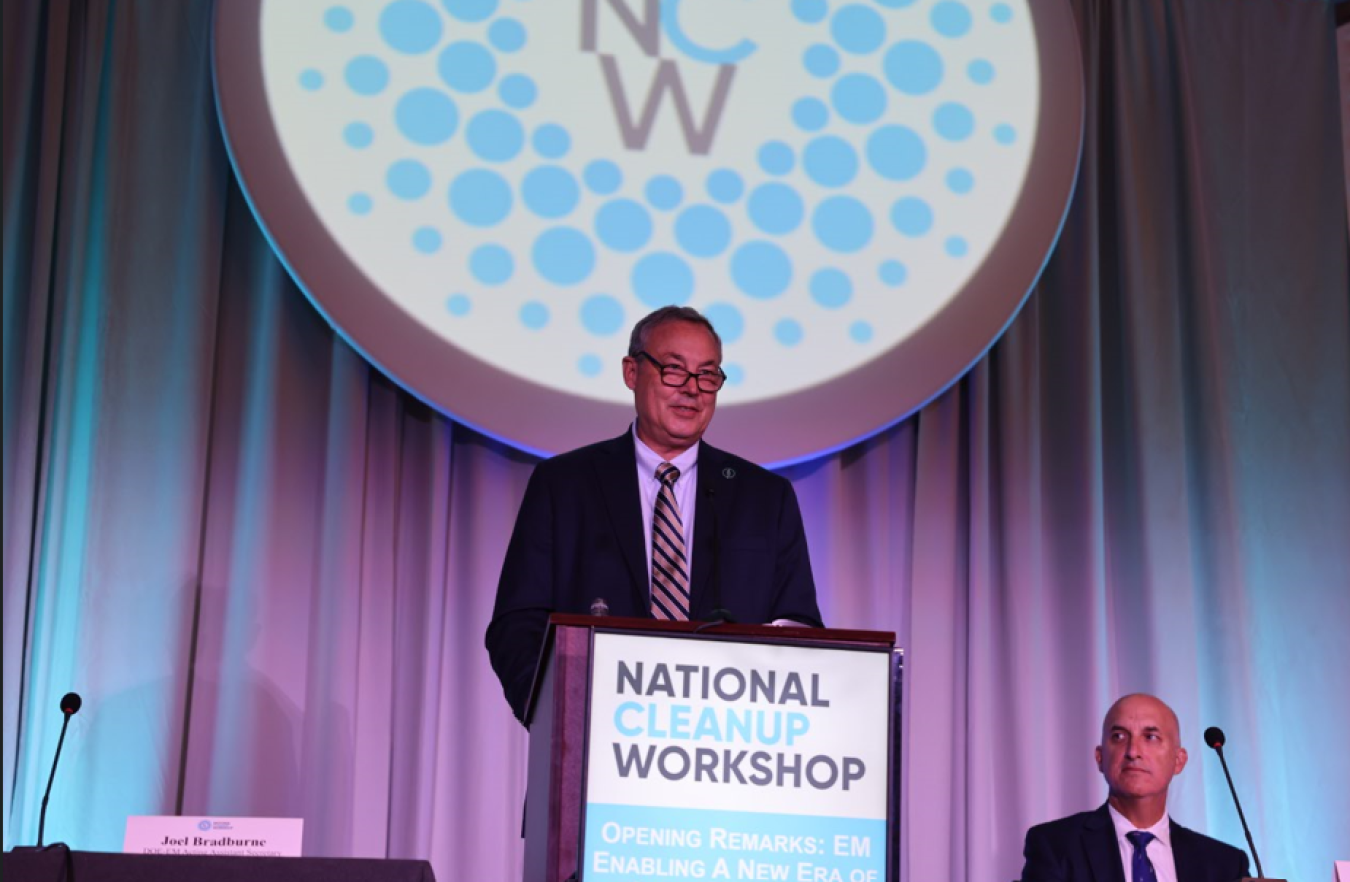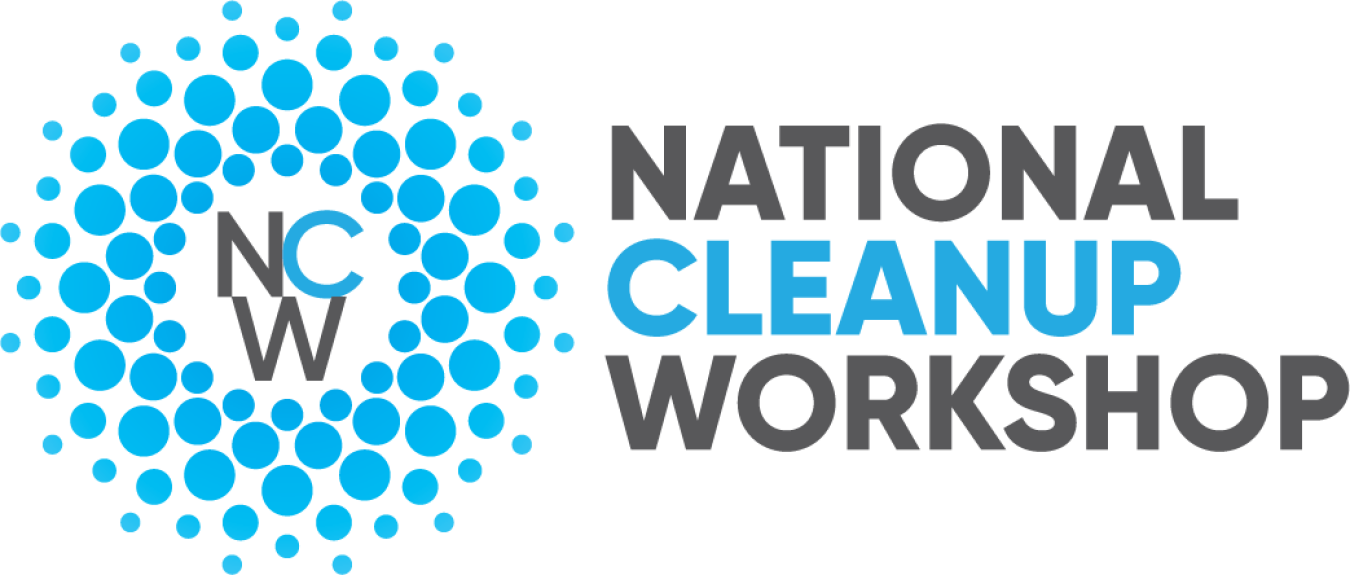As the U.S. Department of Energy Office of Environmental Management addresses the legacy of the past, it has incredible opportunities to be part of what’s been dubbed Manhattan Project 2.0, a strong vision for the future focused on winning the global artificial intelligence race and ushering in a nuclear renaissance to fuel it, acting EM Assistant Secretary Joel Bradburne said in the keynote address at the 2025 National Cleanup Workshop.
Office of Environmental Management
September 24, 2025U.S. Department of Energy Office of Environmental Management acting Assistant Secretary Joel Bradburne speaks during the keynote address at the 11th Annual National Cleanup Workshop. Energy Communities Alliance Executive Director Seth Kirshenberg is at right.
ARLINGTON, Va. — As the U.S. Department of Energy (DOE) Office of Environmental Management (EM) addresses the legacy of the past, it has incredible opportunities to be part of what’s been dubbed Manhattan Project 2.0, a strong vision for the future focused on winning the global artificial intelligence race and ushering in a nuclear renaissance to fuel it, acting EM Assistant Secretary Joel Bradburne said in the keynote address at the 2025 National Cleanup Workshop today.
"It starts with people like you who are committed to cleaning up the past while focusing on the future," Bradburne told the audience that included industry leaders, federal representatives, local elected officials, state officials and other stakeholders. “As we advance cleanup, we’re transforming liabilities into opportunities to unleash American energy, lead the world in innovation, fuel the AI race and support our communities.”
Hosted by Energy Communities Alliance with the cooperation of EM and the Energy Facility Contractors Group, the workshop is the premier annual gathering to discuss progress in environmental cleanup of former government weapons sites and nuclear research facilities.
In his address, Bradburne pointed to EM progress toward the Manhattan Project 2.0 vision at Oak Ridge in Tennessee and the Portsmouth Site in Ohio.
Oak Ridge is the first Manhattan Project site to close its nuclear lifecycle and open a new era of advanced nuclear in Tennessee after tearing down old, contaminated buildings and creating space to build up new nuclear.
At Portsmouth, two advanced reactors are in the works on land EM transferred back to the community, Bradburne said.
Partnering with the best of American industry, EM is leveraging our unique assets to realize the Trump Administration’s vision as we rebuild a domestic supply chain and lead the world towards a future fueled by American nuclear energy, Bradburne said.
He cited General Matter, which is rebuilding a nuclear fuel base that will add energy for advanced manufacturing and AI on land the nuclear firm is leasing from DOE at the Paducah Site in Kentucky.
Bradburne also discussed how DOE is seizing opportunities to fuel the global AI race using land EM no longer needs and the possibility of enhancing beneficial reuse and recycle options for nickel stockpiles as well as other metals at several EM sites.
"It could provide materials for grid-scale products while reducing the volume of materials that we have to dispose of, enabling another win-win for DOE, communities, industry and taxpayers," he said.
Bradburne also focused on EM’s work to run the program more like a business, driving efficiency, implementing common-sense solutions and maximizing opportunities to deliver more for American taxpayers.
“At Paducah, we were able to partner with the EPA and the state of Kentucky on a streamlined approach that’s reducing regulatory decisions by 90 percent, allowing for the accelerated cleanup and freeing up land for future use as quickly as possible,” he said.
In closing, Bradburne remarked that there is so much potential, whether it’s leveraging our skilled workforce, driving innovation at EM’s Savannah River National Laboratory, delivering on cleanup or repurposing land to power the AI race.
“As we look ahead, we have every reason to be excited about Manhattan Project 2.0 as we advance cleanup and seize opportunities to transform from nuclear waste remediation to nuclear renaissance,” he said.
-Contributors: Jordan Anderson, David Sheeley
To receive the latest news and updates about the Office of Environmental Management, submit your e-mail address.



